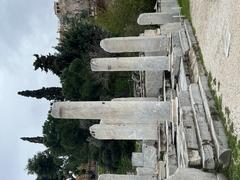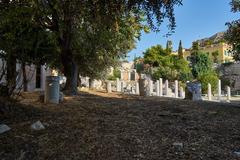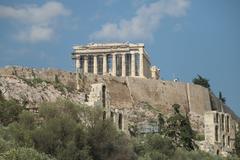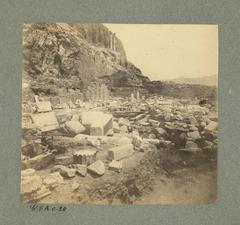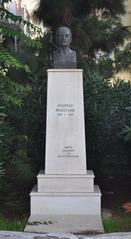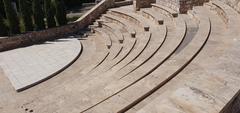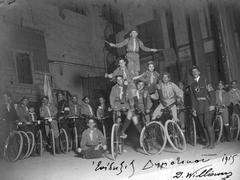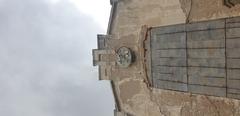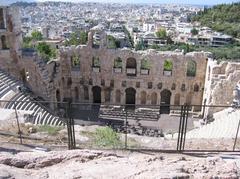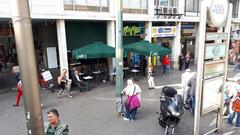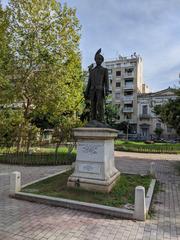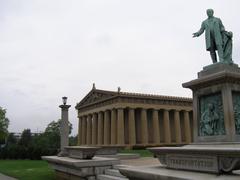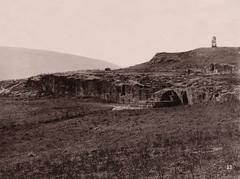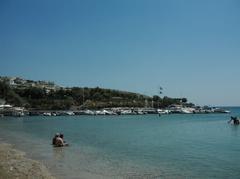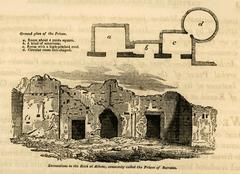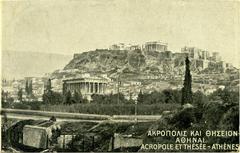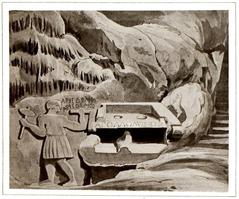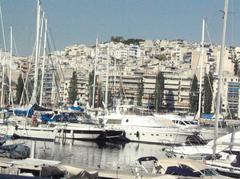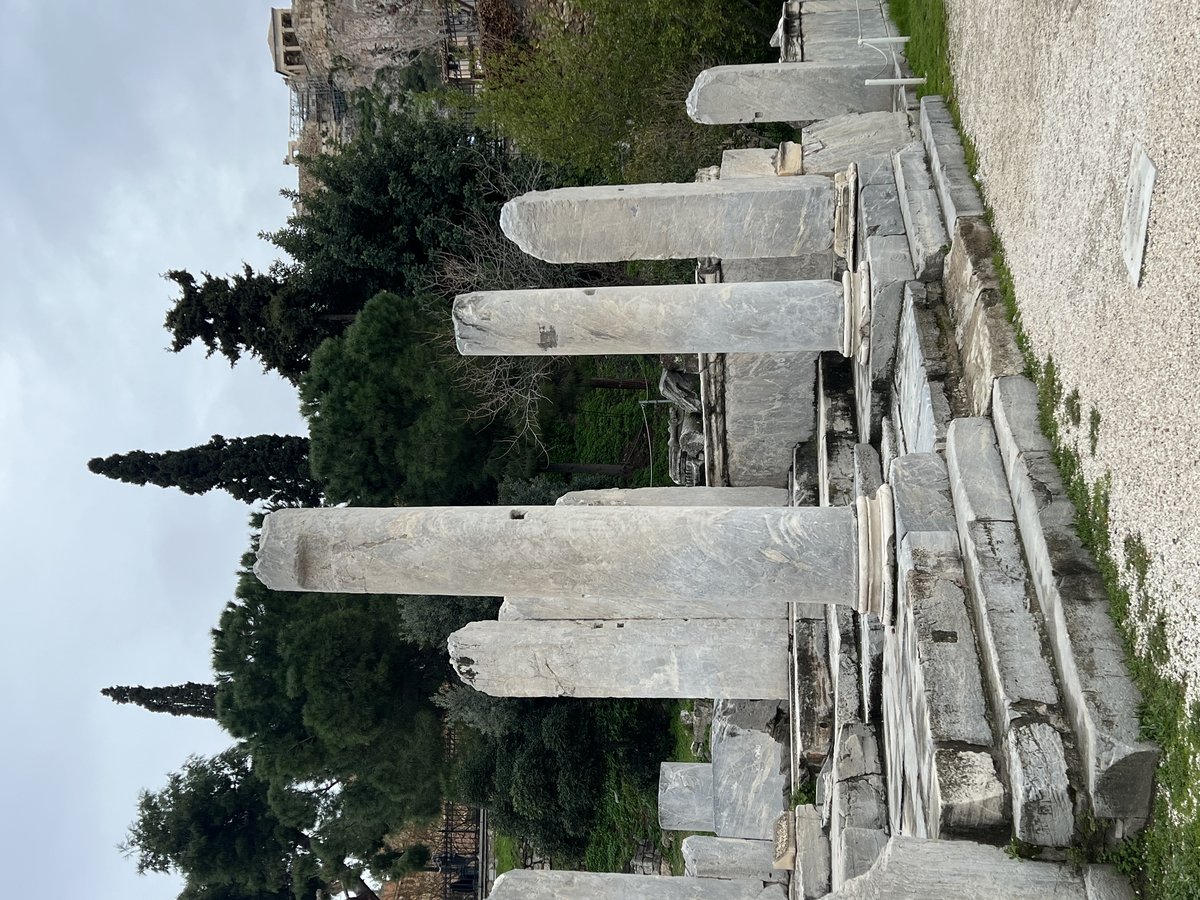
Comprehensive Guide to Visiting the Roman Agora of Athens, Greece
Date: 17/07/2024
Introduction
Nestled in the heart of Athens, Greece, the Roman Agora, or Ρωμαϊκή Αγορά Αθηνών, stands as a testament to the city’s rich historical tapestry. With origins tracing back to the late 1st century BCE during the reign of Emperor Augustus, this archaeological marvel offers a unique glimpse into the commercial and administrative life of ancient Roman Athens. Funded by Julius Caesar and Augustus, the Roman Agora was constructed to replace the older Greek Agora, reflecting the strategic shift towards Roman influences in the city’s architectural and social landscape (Hellenic Ministry of Culture and Sports). Dominated by iconic structures such as the Gate of Athena Archegetis and the Tower of the Winds, the Agora served as a vibrant marketplace and hub of social activities, bridging the cultural exchange between Greeks and Romans (Athens Info Guide). Over centuries, the site endured various phases of decline and rediscovery, with significant excavations beginning in the 19th century that revealed its historical treasures. Today, the Roman Agora is a protected archaeological site, meticulously preserved and restored to offer visitors an immersive journey through time (Greek Reporter).
Table of Contents
- Introduction
- History
- Visitor Experience
- Best Time to Visit
- Dining and Refreshments
- Safety and Etiquette
- Weather Considerations
- Souvenirs and Shopping
- Language and Communication
- Emergency Contacts
- FAQ
- Conclusion
History
Origins and Construction
The Roman Agora of Athens dates back to the late 1st century BCE, during the reign of Emperor Augustus. It was constructed to replace the older Greek Agora, which had become too small and congested for the city’s needs. Funded by Julius Caesar and Augustus, the new marketplace served as the commercial and administrative center of Roman Athens. The main entrance, the Gate of Athena Archegetis, built in 11 BCE, exemplifies Roman architecture with its four Doric columns and entablature.
Architectural Features
The Roman Agora is a rectangular open space surrounded by colonnades, shops, and other public buildings. The central courtyard, measuring approximately 111 meters by 98 meters, was paved with large marble slabs. Notable structures include the Tower of the Winds, an octagonal marble clocktower built by the astronomer Andronicus of Cyrrhus in the 1st century BCE. The tower functioned as a timekeeping device, weather vane, and sundial, with each side adorned by reliefs depicting different wind deities.
Historical Significance
The Roman Agora played a crucial role in ancient Athens, serving as a marketplace and center for social and political activities. It housed various public buildings, including the Agoranomion, where market officials oversaw trade, and the Vespasianae, a public latrine. The Agora was central to Athens’ cultural renaissance during the Roman period, hosting public speeches, religious ceremonies, and theatrical performances, and facilitating cultural exchange between Greeks and Romans.
Decline and Rediscovery
The decline began in the 3rd century CE following the Heruli invasion in 267 CE. The Agora was partially destroyed and gradually abandoned. Its rediscovery began in the 19th century, with excavations by the Greek Archaeological Society uncovering its remains. Today, it is a protected archaeological site managed by the Hellenic Ministry of Culture and Sports.
Preservation and Restoration
Ongoing efforts to preserve and restore the Roman Agora involve various conservation projects to stabilize the ruins. These include the restoration of key structures such as the Gate of Athena Archegetis and the Tower of the Winds. Modern technologies like 3D scanning and digital modeling have been employed to document the site and create virtual reconstructions, enhancing our understanding of its layout and architectural features.
Visitor Experience
Visiting Hours and Tickets
The Roman Agora is open to the public year-round. Opening hours may vary seasonally, so it is recommended to check the official website of the Hellenic Ministry of Culture and Sports for the latest information. Tickets can be purchased on-site or online, with discounts available for students, seniors, and groups.
Travel Tips and Nearby Attractions
The Roman Agora is located in the heart of Athens, easily accessible by public transportation. Nearby attractions include the Acropolis, the Ancient Agora, and the Plaka neighborhood, offering a rich array of historical and cultural experiences.
Accessibility and Guided Tours
The site is equipped with modern amenities, including restrooms, a gift shop, and a café. Guided tours are available, providing in-depth information about the history and significance of the Roman Agora. The site also hosts various cultural events and educational programs throughout the year.
Photographic Spots
Visitors will find numerous photographic opportunities within the Roman Agora. The well-preserved ruins, the iconic Tower of the Winds, and the surrounding colonnades offer stunning backdrops for capturing the essence of ancient Athens.
Best Time to Visit
The Roman Agora is best visited during the spring (April to June) and autumn (September to November) months. During these periods, the weather is mild and pleasant, making it ideal for exploring the outdoor site. Summer months can be extremely hot, with temperatures often exceeding 35°C (95°F), which can make walking around the ruins uncomfortable. Winter, while generally mild, can be rainy and less predictable.
Dining and Refreshments
There are several cafes and restaurants near the Roman Agora where visitors can enjoy a meal or a refreshing drink. Traditional Greek cuisine is widely available, with many establishments offering outdoor seating with views of the ancient ruins. Some popular options include Diodos Archaias Agoras and Kuzina, both of which offer a mix of traditional and contemporary Greek dishes.
Safety and Etiquette
While visiting the Roman Agora, it is important to respect the historical significance of the site. Visitors should avoid touching or climbing on the ruins, as this can cause damage. It is also advisable to stay on designated paths to protect both the site and your safety. Keep an eye on your belongings, as tourist areas can sometimes attract pickpockets.
Weather Considerations
Given the outdoor nature of the Roman Agora, it is important to be prepared for the weather. During the summer months, bring plenty of water, wear a hat, and apply sunscreen to protect against the intense sun. In the winter, a light jacket and an umbrella may be necessary. Always check the weather forecast before your visit to ensure a comfortable experience.
Souvenirs and Shopping
There are several souvenir shops near the Roman Agora where visitors can purchase mementos of their visit. These shops offer a range of items, from postcards and magnets to more unique finds like replicas of ancient artifacts and handmade jewelry. For a more extensive shopping experience, the nearby Monastiraki Flea Market is a great place to explore.
Language and Communication
While Greek is the official language, English is widely spoken in tourist areas, including the Roman Agora. Most signs and informational plaques are available in both Greek and English, making it easy for international visitors to navigate and understand the site. Learning a few basic Greek phrases, however, can enhance your experience and is always appreciated by locals.
Emergency Contacts
In case of an emergency, the following contact numbers are useful:
- Emergency Services (Police, Fire, Ambulance): 112
- Tourist Police: 171
- Nearest Hospital: Tzaneio General Hospital of Piraeus, +30 213 207 8000
Having these numbers handy can provide peace of mind during your visit.
FAQ
Q: What are the visiting hours for the Roman Agora of Athens?
A: The visiting hours vary seasonally. Check the official website of the Hellenic Ministry of Culture and Sports for the most up-to-date information.
Q: How much do tickets to the Roman Agora cost?
A: Ticket prices are generally around €8 for adults, with discounts available for students, seniors, and groups. Certain days offer free admission, such as the first Sunday of each month from November to March.
Q: Is the Roman Agora accessible to visitors with disabilities?
A: Yes, the site is designed to be accessible to all visitors, including those with disabilities. Main pathways are relatively flat and wide, but some areas may have uneven surfaces or steps.
Q: Are guided tours available at the Roman Agora?
A: Yes, guided tours are available and provide in-depth information about the site’s history and significance.
Q: What other attractions are near the Roman Agora?
A: Nearby attractions include the Acropolis, the Ancient Agora, and the Plaka neighborhood.
Conclusion
In conclusion, the Roman Agora of Athens is more than just an ancient marketplace; it is a living chronicle of the city’s enduring legacy and cultural evolution. From its construction in the late 1st century BCE to its role as a bustling hub of Roman Athens, the Agora is a testament to the rich interplay between Greek and Roman civilizations. The site’s architectural marvels, such as the Gate of Athena Archegetis and the Tower of the Winds, along with its historical significance, make it a must-visit destination for history enthusiasts and casual travelers alike. The ongoing preservation efforts ensure that this historical gem remains intact for future generations to explore and appreciate. Whether you’re delving into its storied past, capturing its beauty through photography, or simply enjoying the surrounding attractions, the Roman Agora offers an enriching and unforgettable experience (Athens Walking Tours, UNESCO).
References
- Exploring the Roman Agora of Athens - History, Visiting Hours, and Tickets (2023), Hellenic Ministry of Culture and Sports Hellenic Ministry of Culture and Sports
- Discover the Roman Agora of Athens - History, Visiting Hours, and Tickets (2023), Greek Reporter Greek Reporter
- Ultimate Guide to Visiting the Roman Agora of Athens - Hours, Tickets, and Tips (2023), Athens Info Guide Athens Info Guide
- Ultimate Guide to Visiting the Roman Agora of Athens - Hours, Tickets, and Tips (2023), Athens Walking Tours Athens Walking Tours
- Ultimate Guide to Visiting the Roman Agora of Athens - Hours, Tickets, and Tips (2023), UNESCO UNESCO
